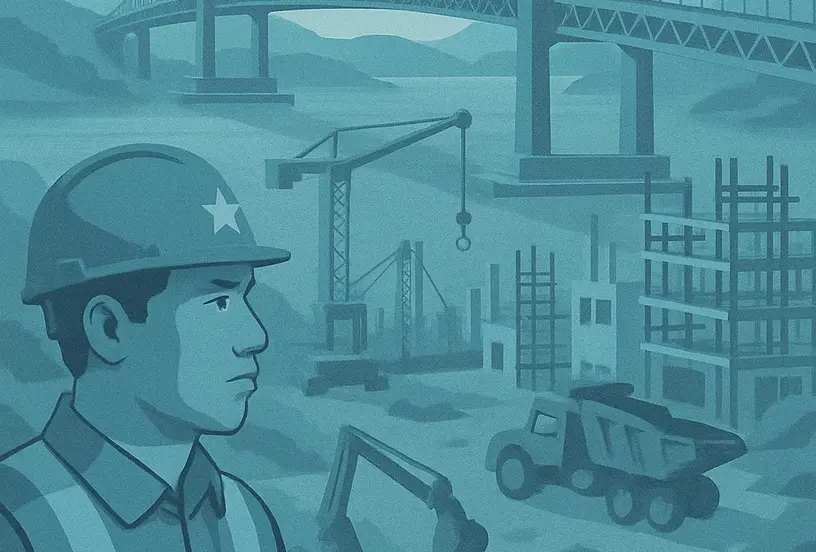China’s Construction Revolution: Building the Future Today
From skyscrapers that seem to appear almost overnight to entire parks created with 3D printing, from airports that float on water to augmented reality reshaping construction itself, China is not waiting for the future. It is building it right now. What you’re about to see are massive projects so advanced they make the rest of the world look like it’s a century behind.
Mini Sky City: Defying the Rules of Time
Back in 2015, China stunned the world with a project that defied everything we thought we knew about construction. A skyscraper not built in years, not even in months, but in just 19 days. They called it Mini Sky City, and it became a living example of how innovation can bend the rules of time.
Soaring 670 feet into the sky, this 57-story giant didn’t rise through conventional construction. Instead, it was assembled piece by piece using modular design. Entire sections were pre-fabricated in advance, shipped to the site, and then stacked together like the pieces of a massive Lego set. Once in place, the structure came to life at a pace so fast it seemed almost unreal.
Watching an entire skyscraper emerge in less than 3 weeks feels like witnessing the future unfold before your eyes. But what’s even more mind-blowing is what came next. The same company behind Mini Sky City revealed an even bolder plan: a 220-story tower built using the very same method. To put that into perspective, Mini Sky City is only 57 stories tall, meaning their next project would more than quadruple it.
Kela Power Station: Conquering the Impossible
High in the mountains of China where freezing winds cut through the air and temperatures plummet to minus 30 degrees stands one of the most extraordinary power plants ever built. The Kela Power Station. What makes this site remarkable isn’t just its brutal environment, but the daring vision behind it.
Unlike most power stations, Kela isn’t fully hydro, nor is it fully solar. Instead, it combines the strengths of both. Spread across an astounding 170 million square feet, vast fields of solar panels work in harmony with powerful hydro systems, together generating over 1 gigawatt of clean renewable energy. This is not only the largest hydro-PV plant in the world, but also one of the most ambitious, built in conditions that most would consider impossible.
AICT 3D Printed Park: The Future of Construction
Picture this: an entire public park covering nearly 60,000 square feet built not with traditional tools but entirely through 3D printing technology. That’s exactly what China unveiled with the groundbreaking AICT 3D printed park. Every detail from the benches to the sculptures, from the flower beds to the retaining walls was crafted by massive 3D printing machines using concrete as their medium.
The result is a flowing landscape of smooth wave-like designs that seamlessly blend into one another, an architectural style that feels futuristic, almost otherworldly. Even more astonishing is the speed. Despite its enormous scale, the entire park was completed in just two and a half months at a fraction of the cost of traditional construction methods.
Shanghai 3D Printed Bridge: Engineering at Scale
When you think of 3D printing, you probably imagine small objects, maybe furniture or decorative pieces. But in Shanghai, engineers used it to build something far more ambitious: an entire pedestrian bridge. Stretching almost 86 feet, it holds the title of the largest 3D printed bridge in the world.
Constructed in just 450 hours by two robotic arms, the bridge is made of 44 hollow concrete units for the main span and 66 more pieces forming its curved handrails. Its elegant wave-like design doesn’t just complement the landscape; it makes the structure look like a piece of art. And just like the 3D printed park, the bridge was faster and far cheaper to build than traditional methods.
Hualian Shimao Complex Relocation: Moving History
What do you do when a historic landmark stands directly in the path of new development? Most places would make the difficult choice to demolish it. But in China, the answer was far more ambitious. They decided to move the entire building.
The challenge came when city planners wanted to construct a massive underground shopping center, a parking facility, and subway connections beneath the Hualian Shimao complex. But rather than sacrificing this century-old treasure, engineers turned to technology that seemed almost science fiction. The solution? A fleet of robotic hydraulic jacks that carefully lifted the 8,270-ton structure off the ground and began shifting it forward step by step like a giant mechanical walk.
Jintang Canyon Bridge: Record-Breaking Engineering
The Jintang Canyon Bridge is not just another construction project. It’s a record-breaking feat of human engineering. Rising more than 2,000 feet above the valley floor, this colossal structure is set to become the highest bridge on Earth, overtaking the previous world record held in the very same province.
Building something at this altitude posed a challenge unlike any other. Traditional cranes couldn’t even reach the site, let alone handle the massive loads required. So, Chinese engineers did what they do best: innovate. Instead of relying on conventional machinery, they designed the largest cable crane system ever built, capable of lifting and placing trusses, each one weighing more than 21,000 tons with absolute precision.
Inflatable Construction Domes: Clean Construction
Construction sites are notorious for two things: deafening noise and choking dust. But in China, engineers came up with a surprisingly simple yet brilliant solution: inflatable domes. Instead of battling pollution with half measures, entire construction sites are sealed under massive air-filled structures.
These domes act as barriers, trapping dust, dirt, and harmful particles while also muffling the roar of heavy machinery. Inside, advanced filtration systems clean the air before it ever leaves the dome, creating a cleaner, more sustainable construction environment.
Foshan Foundation Cultural Center: Living Architecture
At first glance, the Foshan Foundation Cultural Center in Shanghai looks like a striking modern theater. But stare a little longer and you’ll realize it holds a mesmerizing secret: the building itself moves. Its facade is made of giant kinetic curtains, three enormous bronze tubes that slowly rotate around the exterior.
The movement is so subtle that you might not notice it at first, but over time the patterns shift, creating endless waves that make the building look different every single time you see it. This design isn’t only about beauty. The moving facade also transforms the building’s functionality, with panels that can be positioned to reveal or conceal parts of the stage or frame different views.
Inspired by Living Architecture?
Kinetic façades. Adaptive spaces. Art that moves with engineering precision. Turn that inspiration into your next role—discover opportunities in architecture, structural engineering, fabrication, and parametric design.
Explore Architecture & Design Jobs →Sponge City Landscaping: Smart Urban Planning
China isn’t just building taller; it’s also building smarter. Enter sponge city landscaping, a revolutionary urban planning concept that turns entire cities into living ecosystems. Instead of lifeless concrete jungles, sponge cities integrate rain gardens, wetlands, green roofs, urban forests, and sunken parks into the very fabric of city design.
These green spaces soak up rainwater like a sponge, reducing flood risks, refilling aquifers, and creating biodiverse habitats in the heart of urban life. Even the sidewalks are porous, allowing water to seep through naturally. The result: cities that not only resist floods but thrive with cleaner air, healthier ecosystems, and vibrant green spaces.
Dalian Jinzhouwan Airport: Creating Land from Sea
When it comes to airports, China isn’t settling for the ordinary. Instead of building on land, engineers decided to create an entire island just for the Dalian Jinzhouwan Airport. Construction began in 2011, and once completed, it will stand as the largest offshore airport in the world.
Building a project of this scale on open water required groundbreaking engineering techniques, essentially creating new land from the sea itself. When it opens in 2026, it won’t just be another transportation hub; it will be a testament to how far China is willing to go to push the boundaries of infrastructure.
Yangqu 3D Printed Dam: The Future of Mega Structures
Finally, the project that may redefine how mega structures are built: the Yangqu 3D printed dam planned for the Tibetan Plateau. This dam will stand 590 feet tall, but here’s the incredible part: it will be constructed entirely through 3D printing. Gigantic robotic printers will layer concrete piece by piece, just like the printer sitting on your desk, only on a scale the world has never seen.
But it gets even more futuristic. Every machine involved—trucks, bulldozers, cranes—will be AI-operated, working autonomously without human drivers. That means no delays, no accidents, and perfect coordination from start to finish. The entire dam is expected to be completed in under 2 years, a fraction of the time it would take using conventional methods.
The Bottom Line: A Century Ahead
China’s construction innovation spans from modular skyscrapers built in 19 days to 3D printed infrastructure and floating airports, demonstrating technological superiority that leaves other nations decades behind. These projects prove that China isn’t just building for today; they’re constructing the future, one revolutionary project at a time.
From the Mini Sky City’s 19-day construction to the Yangqu Dam’s AI-operated 3D printing, China has shown that when it comes to construction technology, they’re not just ahead of the curve—they’re defining it. The rest of the world can only watch in amazement as China builds tomorrow’s infrastructure today.




